Dubrovnik has been a surprise! I’ve seen the dramatic photos of the city walls against the deep blue of the Adriatic Sea. I’ve heard that it was is an up and coming travel hotspot, recovering its sun worshipper appeal for northern Europeans after the dreadful Balkan wars of the 1990s. What I had not understood was its long standing devotion to liberty, nor did I remember that it had undergone a year long siege in the early 1990s under the guns of the Serb-dominated Yugoslavian military forces.
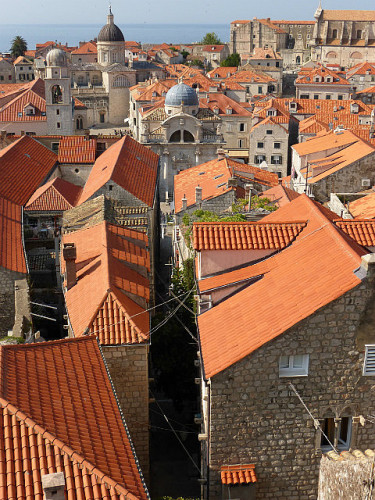
We started our day determined to experience the walk on the medieval city walls before the heat and the curse of the cruise crowd crush (Dubrovnik is besieged with cruise ships throughout the summer) strained the delight from the walk. We successfully navigated the public bus system and found ourselves climbing the steps to the city wall walk nearest the Old Port shortly before 9 am.
The city is like a valley in that the pedestrian area running through its center is lower than the edges on both the north and south sides. The pedestrian thoroughfare was a canal in early medieval times, dividing the older Greco-Roman population from the Slavic newcomers. When the two cultures joined in the 11th century, the canal was filled in, becoming today’s “Stradan”, the town’s central street, and its limestone surface now shimmers from the polishing tramp of millions of shoes and sandals of visitors.
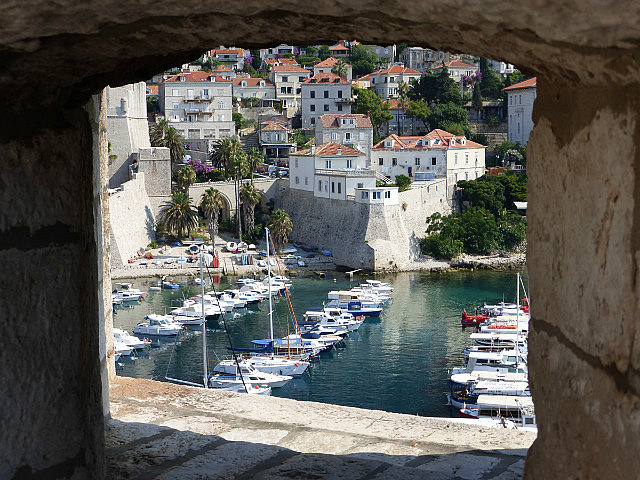
Through the years, WAI walkers have enjoyed several different kinds of wall walks around ancient and medieval fortified cities. China’s Xian, Germany’s Rothenberg, and Israel’s Jerusalem are a few examples. Always, the elevated vantage point provides a unique perspective on life in the city. In Dubrovnik, for example, older roof tiles are weathered a near-gray, while new tiles, marking the roofs replaced after the siege of 1990/1991, are almost orange by comparison, an observation only possible from above.
What surprised me most, however, about Dubrovnik, was learning that it was an independent city state for much of its history. Citizens of the city developed trade with the Mediterranean, including the powerful Byzantine Empire based in Constantinople and its successor, the equally dominating Ottoman Empire. Goods were passed through to northern European countries and regions of the western Mediterranean. Calling itself the Republic of Ragusa, its volume of medieval trade approached that of its more powerful Adriatic neighbor, Venice.

Tiny Ragusa bolstered its independence by acting as a mediator in the struggles of more powerful states, earning the goodwill, and sometimes the resentment, of states strong enough to subjugate it. When all else failed, tribute kept Ragusa, later the Republic of Dubrovnik, from coming under the yoke of stronger countries until Napoleon’s rampage through Europe in 1808.
The city was called Ragusan Republic, and elected leaders called “rectors” who served at the will of the aristocratic voters for one month only, were confined to their palace for their term of office except when on state business. Libertas (liberty) has always been near to the heart of citizens of Dubrovnik, so much so that the Republic of Dubrovnik, or Ragusa, was the first state to recognize the fledgling republic of the United States of America in 1776.
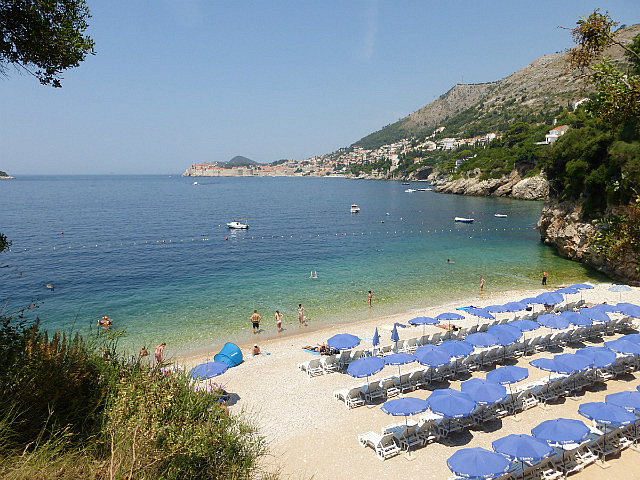
After mapping a route through the city, Scott and I headed east along a coastal road in search of the little-publicized Saint Jacob’s beach. Two kilometers later, we descended a long flight of stairs to a hidden gem. After soaking in the Adriatic vistas, framed by tidy rows of blue beach umbrellas below and a straight-on view of Dubrovnik’s Old Port above, we spoke with staff at the beach café about finishing our walk here. It seems a cold drink on the shores of the Adriatic, and maybe a quick sea soak, is a perfect way to unwind after a morning of walking. We returned to Dubrovnik’s Old Port by way of water taxi, and realized that this is a completely appropriate form of transport to return to this medieval Mediterranean maritime power.
The afternoon was spent talking with local partners about hotels and logistical matters. As the day cooled, we boarded the public bus to return to the city, then queued for a gondola ride to be whisked to the top of Mount Srđ. At the top, a fortress built by Napoleon and used as a last stand by Dubrovnik militia against the Yugoslavian army provided stunning views over Dubrovnik and the Adriatic. The last rays of the setting sun illuminated our path to the small village where we wanted to check out a traditional Croatian country restaurant.
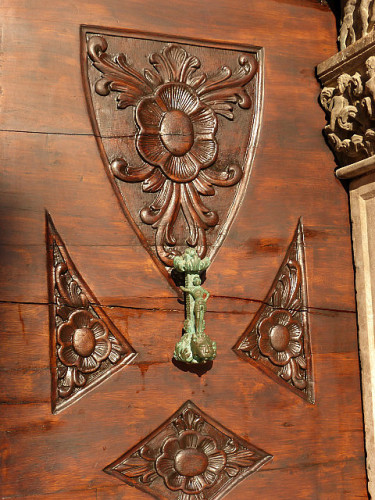
This turned out to be a good lead, and over a marvelous mixed grill platter, Scott and I discussed the possibilities of bringing a group back to enjoy this gondola ride, Adriatic panorama, and walk, followed by the traditional meal. A moonlit taxi ride back to the hotel finished our ultra-fill first day in Croatia![/vc_column_text][/vc_column][/vc_row][vc_row][vc_column][vc_gallery interval=”0″ images=”6767,6770,6746,6747,6748,6749,6751,6753,6754,6756,6757,6758,6760,6761,6762,6764,6766,6768″ img_size=”large”][/vc_column][/vc_row]

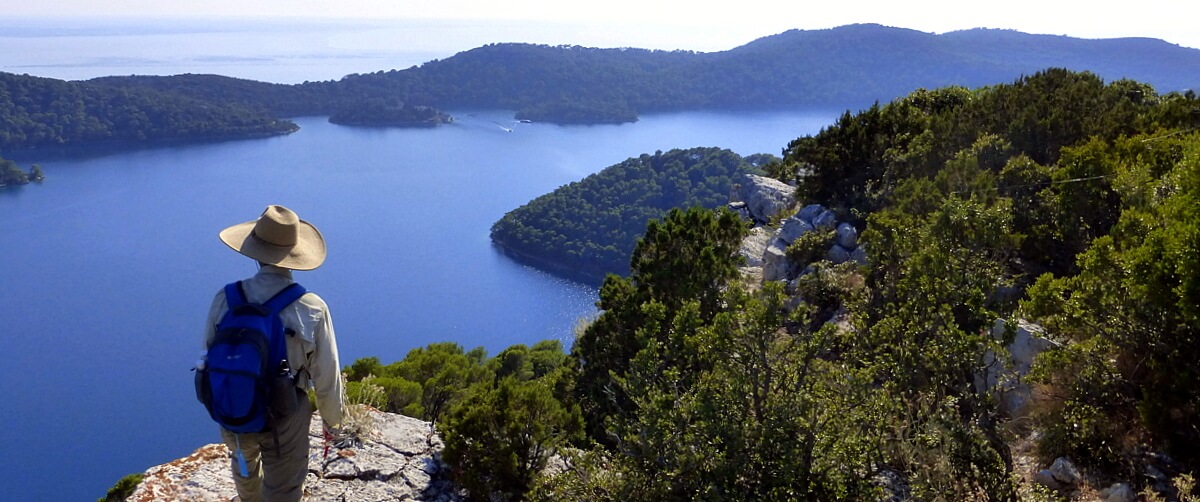
Already sounds like a wonderful trip. Looking forward to it. Just hope I can make it. You plan such lovely trips. Keep it up Dan.
Myrtle, I hope you are here as well. Very idyllic cruising between the islands of Dalmatia. In a couple days, we head inland to see what it feels like to be in Herzegovina and Montenegro.
Thank you Dan and Scott for keeping this 2014 adventure present for us. Have to get through 3 others first.
Lucille – I guess we both have a few trips to get through first. See you in Iceland in a few days!
I was there for a music festiva back in the 80’s before the war. My experience on nearby Dubrovnik’s beaches was topless and sometimes nothing. GASP! You didn’t mention that. We went out to an island on a Sunday for a picnic and swimming. They had a separate nude beach. This is when I realized not everyone should stand about and/or swim naked. Beautiful photos.
Carol – They’ve cleaned up most of that. You have to hunt a bit to find the so-called “naturist” beaches now, thankfully. And it’s true, like one guidebooks says, most of the bodies of the people who like to go around ala naturale on these beaches are not of the type we want to see uncovered.